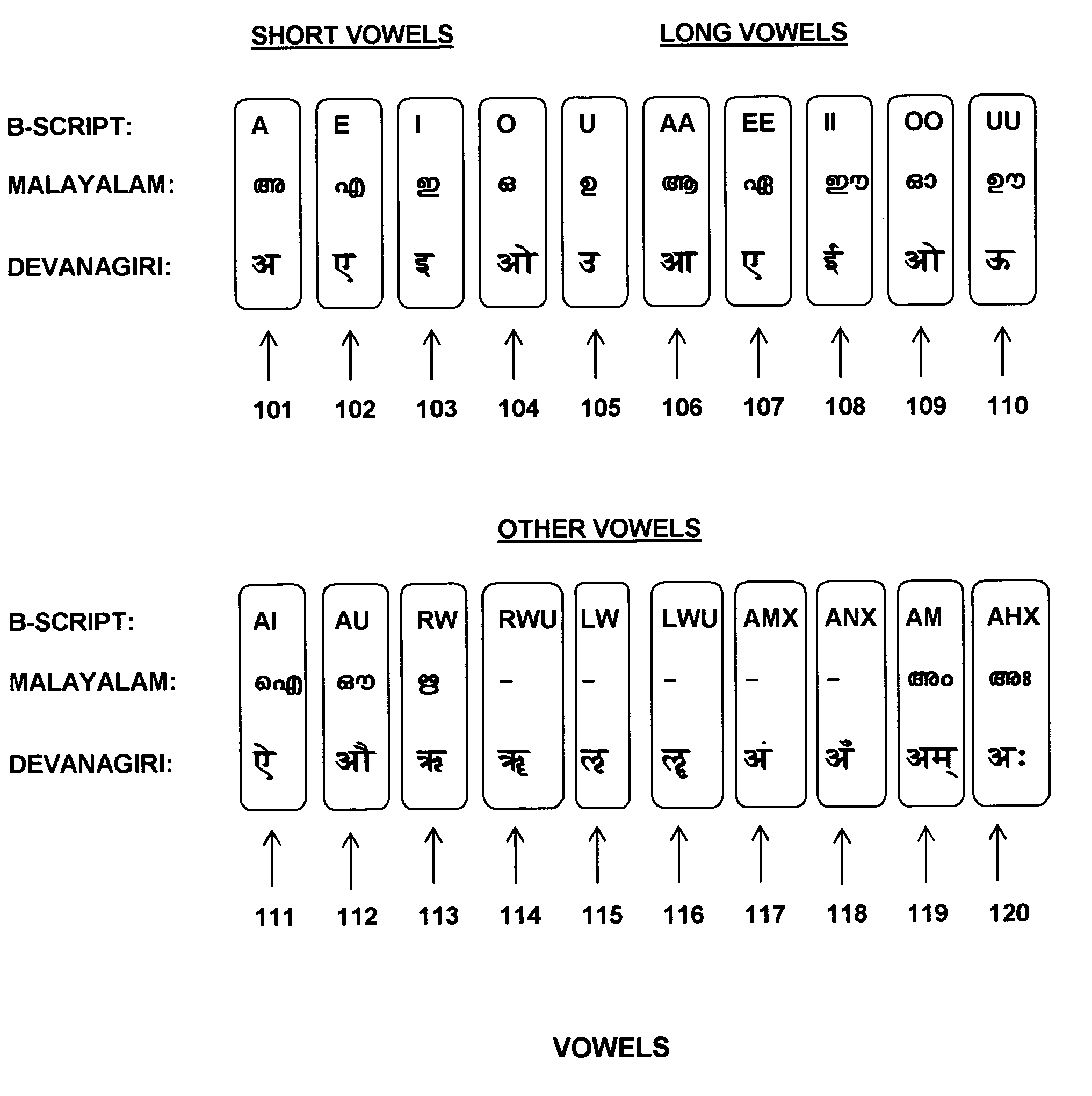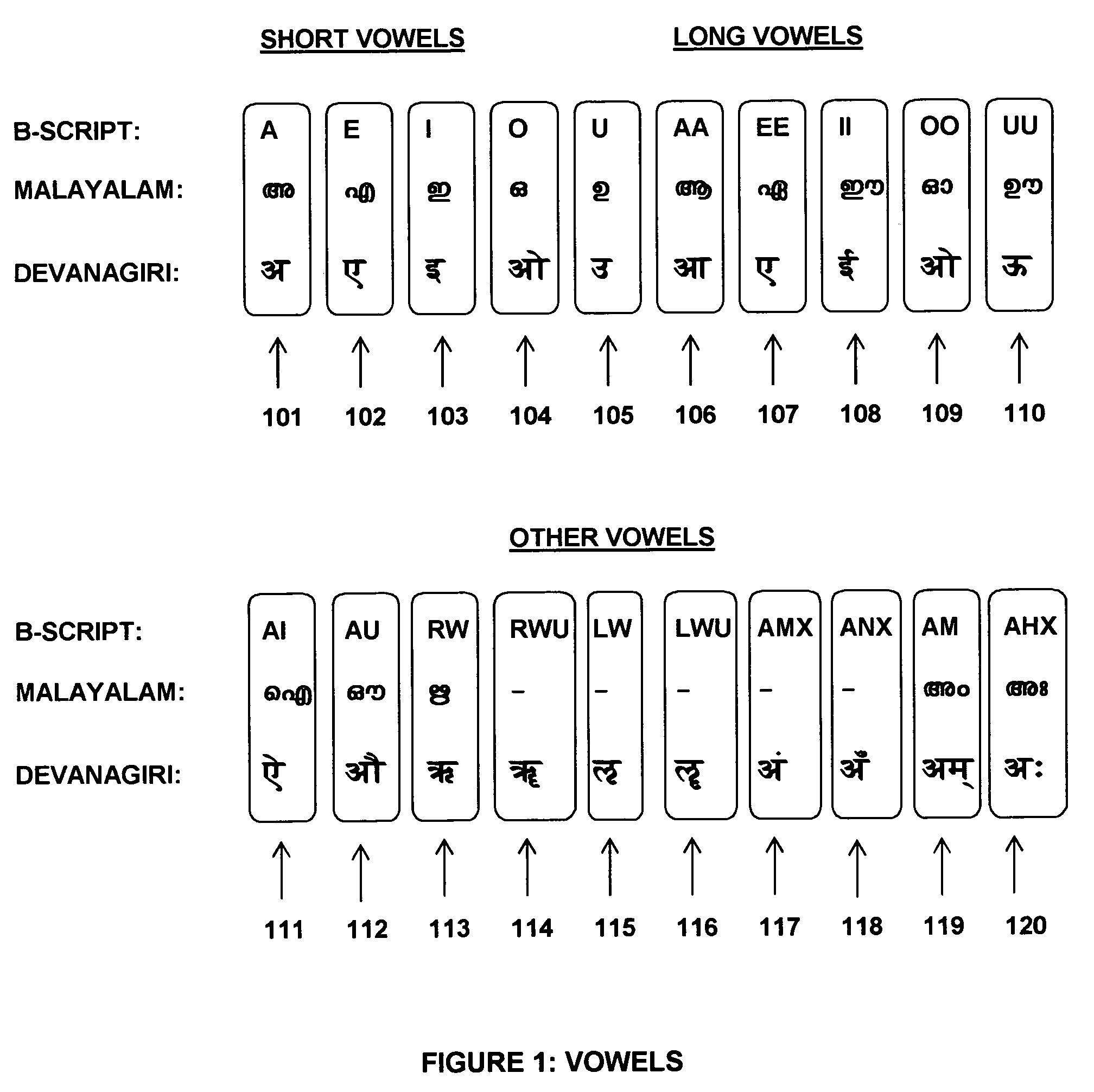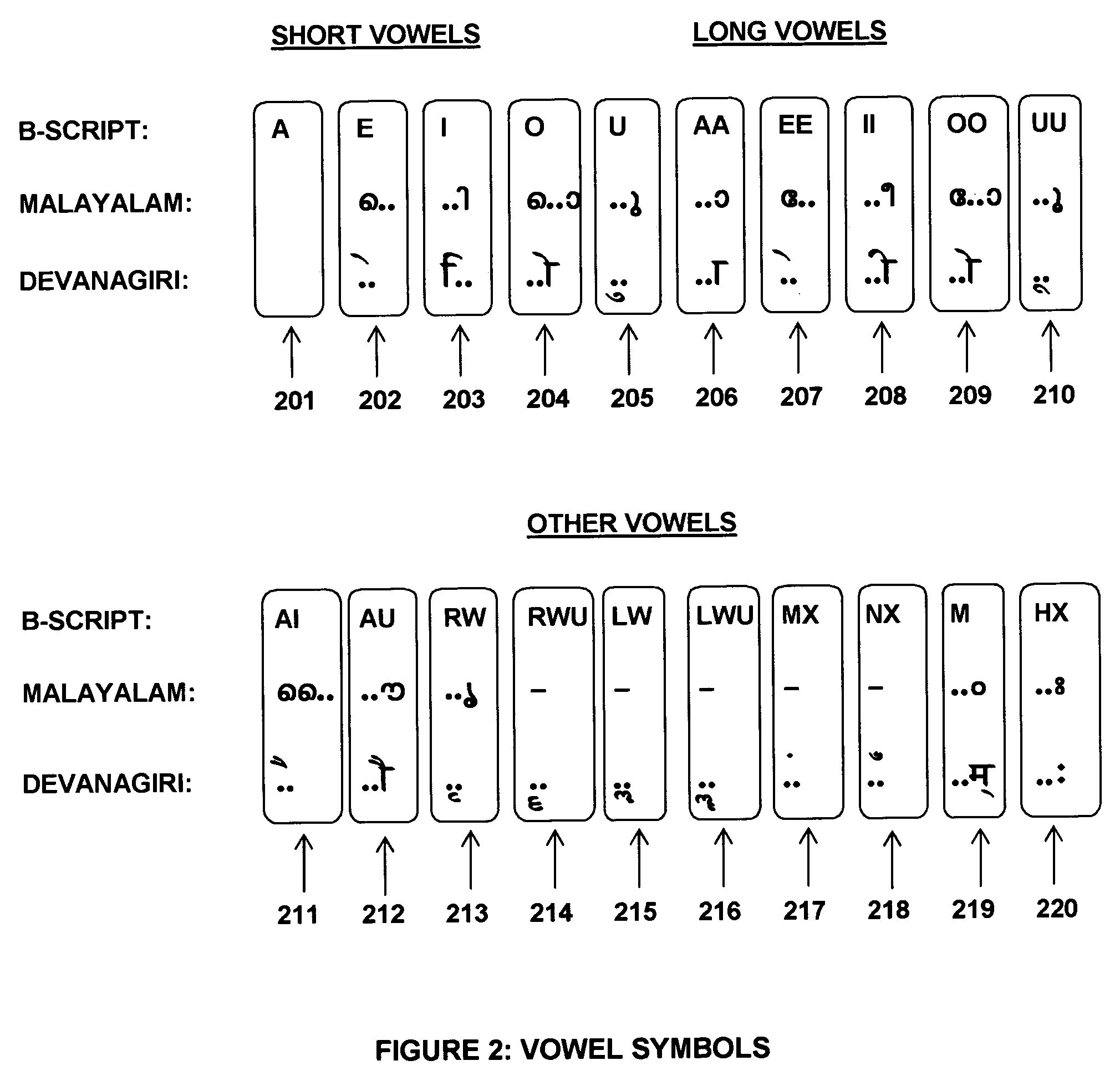System and method for writing Indian languages using English alphabet
a system and alphabet technology, applied in the field of system and method for writing indian languages using english alphabet, can solve the problems of not being able to represent the total number of indian language characters not being able to achieve the mapping between english character representation and indian language characters, and being difficult to represent them in a standard keyboard. achieve the effect of uniform phonetic representation
- Summary
- Abstract
- Description
- Claims
- Application Information
AI Technical Summary
Benefits of technology
Problems solved by technology
Method used
Image
Examples
Embodiment Construction
[0029]FIG. 1 categorizes vowel sounds into three groups, short vowels 101 through 105, long vowels 106 through 110, and other vowels 111 through 120. English character A is used to represent the short vowel 101. English character E is used to represent the short vowel 102. English character I is used to represent the short vowel 103. English character O is used to represent the short vowel 104. English character U is used to represent the short vowel 105. All letters are treated the same whether they are written in the upper case or lower case.
[0030]Of the vowels shown in FIG. 1, Hindi and related languages using the Devanagiri script do not support short E 102 and short O 104, which are present in Malayalam and other south Indian languages. However, the short E 102 and short O 104 can be translated to the Devanagiri EE 107 and OO 109 and a native speaker can understand the distinction between the short and the long forms. This distinction is important if it is necessary to represen...
PUM
 Login to View More
Login to View More Abstract
Description
Claims
Application Information
 Login to View More
Login to View More - R&D
- Intellectual Property
- Life Sciences
- Materials
- Tech Scout
- Unparalleled Data Quality
- Higher Quality Content
- 60% Fewer Hallucinations
Browse by: Latest US Patents, China's latest patents, Technical Efficacy Thesaurus, Application Domain, Technology Topic, Popular Technical Reports.
© 2025 PatSnap. All rights reserved.Legal|Privacy policy|Modern Slavery Act Transparency Statement|Sitemap|About US| Contact US: help@patsnap.com



